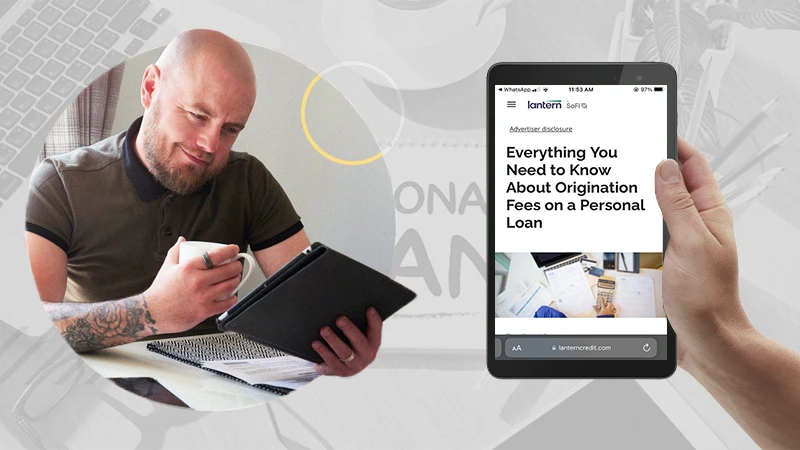How to Invest for a Comfortable Retirement
Planning for retirement is essential for spending your golden years in comfort and without financial worry. Not only should you start planning now, but it’s also a good idea to research what kind of investments you’ll need to make to have the most comfortable retirement possible. Here are some tips and tricks for planning your retirement investment strategy so you can retire comfortably without worrying about money.
The Sooner You Start, The Better
It’s a no-brainer that the sooner you start investing for retirement, the better. The longer you wait, the less money your investments will have when it comes time to retire. Start early, and they’ll have more time to grow — not just in value but also by allowing them more years for compound interest to work its magic.
Get to Know Your Retirement Account Options
There are various tax-advantaged and taxable accounts you can use to save for retirement. Some of them are even offered by your employer or they are available through a brokerage firm or a bank of course. There are multiple forms of accounts that may claim to be the right investment for your retirement plan, but you have to be 100 percent sure about them before you decide to go with one.
- Tax-Advantaged accounts: There are various ways in which the accounts can be tax-advantaged. This means you won’t have to pay taxes on your contribution or the earnings that accrue from the investments.
- Taxable Accounts: The other option you have is the taxable accounts. They are funded with after-tax dollars, this way, you won’t have any deduction whenever you make a deposit.
Types of Retirement Accounts
- Defined-Benefit Plans: You may have heard of it, the ones that are called pensions, these are funded by employers. Based on your salary history and the duration of your employment in that particular organization, they guarantee you a specific retirement benefit.
- 401K and Company Plans: Other employer-sponsored defined plans are via these. They provide benefits like automatic savings and tax incentives, and in some rare cases, they also assist clients with matching contributions.
- Traditional IRAs: IRAs are those retirement accounts that let you tax-deferred investing for retirement. From here, you can even deduct your traditional IRA contribution that you made previously, but that’s only the case when you have met a certain requirement.
- Roth IRAs: These are not tax deducted, but they are qualified distributions for being tax-free. The distinguished part about Roth IRAs is that they have no required minimum distribution.
- SEP IRAs: Other IRAs that are established by the employers themselves are this one. They are also established by self-employees. So, on behalf of eligible employees, employers can make tax-deductible as their contributions.
- SIMPLE IRAs: These are retirement plans that can be used by most small businesses with 100 or lesser employees. Here, employees can contribute up to $14000 for 2023 and about $15,500 for the next year, i.e., 2023. Here, the additional catch-up contribution would be about $3000 for this year and about $3500 for the next one. They can even choose to make a contribution of up to 2% to all employees.
Max Out Your Retirement Savings Accounts
You must save as much money as possible to invest in a comfortable retirement. You can maximize your savings by contributing to tax-advantaged accounts, which allow you to put away more money than non-tax-advantaged accounts.
- Traditional IRA: A traditional IRA allows you to contribute up to $6000 annually. Your contribution amount is taxed before it goes into the account, but the earnings grow tax-free until they are withdrawn after age 59½. If it’s rolled over into another account when you retire, any gains accumulated while it was in the original account will still be taxable as income at that time (but not before).
- Roth IRA: A Roth IRA has different rules than a traditional IRA—you make contributions with post-tax dollars, and withdrawals are tax-free once you reach retirement age (59½). This means there’s no penalty when withdrawing funds early, and if the funds earn interest or other gains while inside the account, those can be withdrawn without taxation either.
- Gold IRA: A gold IRA is a different type of IRA that holds precious metals instead of paper money. Investing in gold IRA options for retirement is excellent because gold protects your assets against inflation and diversifies your investment portfolio. With a company like Advantage Gold, “you are empowered to make your own investment decisions and choose for yourself which IRA-eligible precious metal coins, bullion, and bars to invest in.”
Don’t Be Too Conservative
A common misconception about retirement is that you must be conservative in your investments. This is not the case. You will likely spend more than you earn, so the goal of investing for retirement is to make more money than you pay over time. However, if you invest too conservatively and never make enough money, there’s a chance it won’t cover your retirement expenses.
Therefore, one mustn’t get too conservative with their investments because one may run out of money later. For retirement investing to work correctly, one must always have an eye towards increasing risk tolerance; otherwise, this could result in running out of funds at some point down the road.
Consider Getting a Financial Advisor
As you get older, you must make sure you are investing in a way that will help you meet your retirement goals. There are many things to consider when investing for retirement, including how much money you need and how long it will take to reach that goal. A financial advisor can guide you through this process, ensuring that your chosen investments fit your goals and timeline.
Talk directly with some of these financial advisors before deciding whether one might be right for you; ask questions about their background and approach towards managing money on behalf of clients like yourself. Your financial advisor should be trusted within their industry and have ample experience taking care of investors like yourself.
Create An Emergency Fund
Having at least six months’ worth of living expenses in your emergency fund would be best. This is intended to cover unexpected costs or job loss, but it can also function as a buffer if you want to take on other financial goals (like early retirement). An emergency fund is essential to any savings plan and could be handy for unforeseen events.
The best way to build an emergency fund is by contributing enough money each month so that the account grows steadily over time. You can keep this money in a separate savings account or invest it using your IRA or 401(k). Whatever method you choose, make sure the money is accessible and easy to access if needed—you don’t want to be forced into selling off a stock just when everything has gone south.
The key to a comfortable retirement is knowing how much money you require and being able to save enough of it. You don’t have to be an expert investor—even the most straightforward savings plans can help you reach your goals. The most important thing is to start as soon as possible so that time and compound interest allow for growth over time. Start planning for your golden years today.
Enhancing Business Finance: The Power of Tax Relief…
How Can Families Save More Without Compromising Their…
Emerging Markets and Tech-Driven Growth: Investing in the…
The Future of Finance: Exploring Emerging Technologies and…
Earning Passive Income with Liquidity Pools
Best Practices for Developing an Account Planning Strategy
Dive Into the Oil Profits by Investing in…
Binary Options in Japan: How Bubinga Stands Out
From Whiskey to Watches: The Fascinating Realm of…
Simplifying Borrowing for Your New LLC: Financing Solutions…
Paying Off Personal Loans Early: Pros and Cons…












